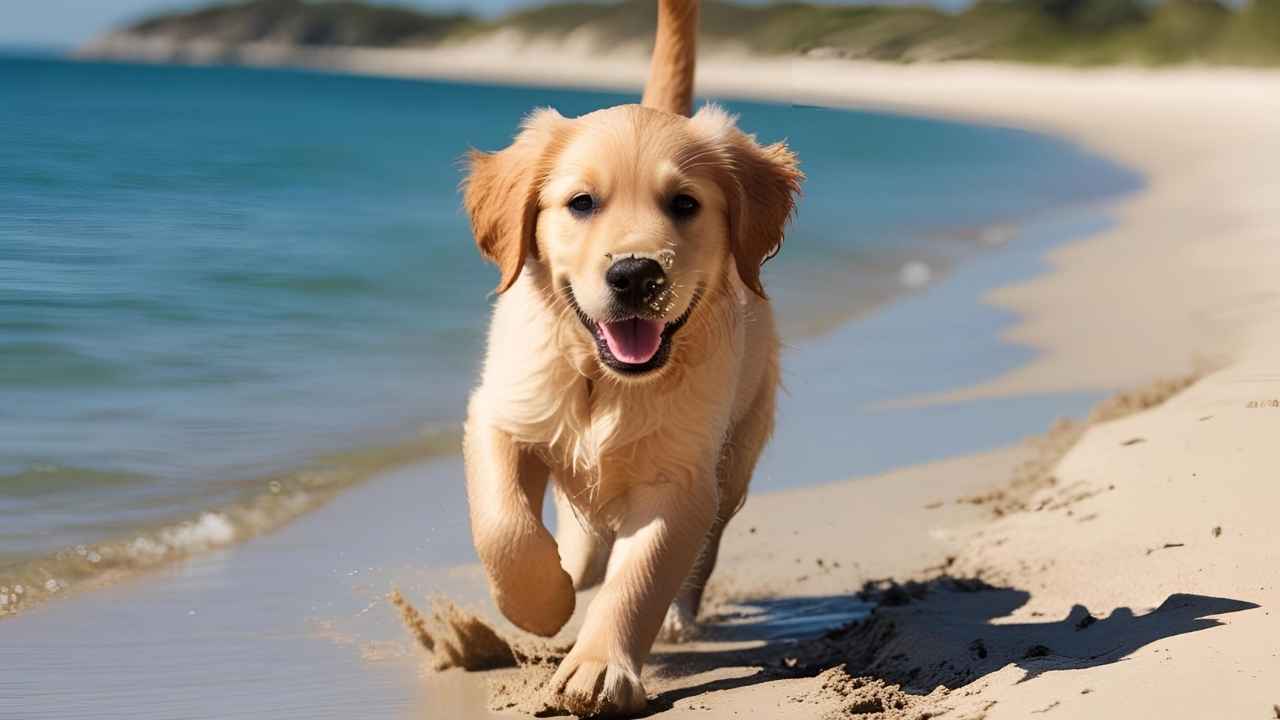Taking your dog to the beach can be a fun and memorable experience. Many dogs love running on the sand, splashing in the water, and enjoying the fresh sea air. A beach visit on warm summer days is a great way to bond with your furry friend.
However, beaches can also bring potential hazards. From sharp shells and strong waves to hot sand and harmful bacteria, it’s important to keep safety in mind. With careful planning and the right supplies, you can enjoy a sun-soaked day without accidents.
In this post, you’ll learn essential safety tips for dog-friendly beaches. We’ll cover everything from socialization and swimming to keeping your dog cool and avoiding sunburn. With these tips, you can ensure a worry-free adventure for both you and your dog.
Sun, Surf, and Safety Tips for Dogs at the Beach
Beaches offer lots of excitement for dogs—open space, new smells, and fun dog-friendly activities. But they also come with risks. Hot sand can burn paws, and sharp shells or debris can cause wounds. Waves and undercurrents may be dangerous, even for a strong swimmer.
Other risks include dehydration, sunburns, and swallowing sand. These can lead to serious health issues like heat stroke or gastrointestinal blockages. Untreated water may also carry harmful bacteria, parasites, or toxic substances.
That’s why it’s so important to prepare before a beach day. Bring supplies like a first-aid kit, towels, fresh water in a dog bowl, and dog cooling vests. Watch beach safety flags for hazardous conditions. With vigilance and close supervision, your dog can stay safe and have a great time.
Socialization is Key
Before heading to the beach, make sure your dog is well-behaved around people and other animals. Socialization is key to a peaceful beach visit. If your dog is aggressive or nervous in off-leash situations, it might be better to practice in a quieter place first.
Look for signs of readiness: your dog should follow recall commands, stay calm around strangers, and avoid beach fights or chasing other dogs. Bring an extra-long lead to give your dog space while staying in control.
If your dog is still learning, slowly introduce them to dog-friendly environments. Short walks, controlled meet-ups, and lots of praise can help your dog become more confident and sociable over time.
Finding the Right Dog-Friendly Beaches
Not all beaches allow dogs, so it’s important to check before you go. A quick internet search can show local dog-friendly beaches and their rules. Look for beach ratings and read reviews from other pet owners.
Pay attention to rules like leash requirements, off-leash zones, and pet-friendly hours. Some places allow dogs only during certain times of the day or year. Knowing the regulations helps avoid fines and ensures everyone enjoys their visit.
Good etiquette is also important. Pick up after your dog, keep noise under control, and be respectful of other beachgoers. Well-behaved dogs and responsible owners help keep dog beaches open for all.
Even Good Swimmers Should Have Dog Life Jackets
Even if your dog is a strong swimmer, it’s best to use dog life jackets. Waves, undercurrents, and tired dogs can lead to accidents. A dog may swim too far and struggle to get back, especially if they get confused or frightened.
Choose a life jacket that fits well, has a handle for easy rescue, and comes in a brightly-colored design to stay visible in the water. These features make it easier to spot your dog among the waves.
Life jackets are especially useful for senior dogs, brachycephalic breeds, or dogs swimming in deep water or riding on boats. They offer peace of mind during beach adventures.
Keep Dogs Cool at the Beach
Dogs can overheat quickly, especially on hot summer days. Signs of heat stroke include heavy panting, weakness, or vomiting. Certain dogs, like those with thick coats or flat faces, are more at risk in warm weather.
Provide shade with a beach umbrella or a pop-up tent. Bring a cooler with ice packs, extra water, and a collapsible dog bowl. Offer water often to keep your dog hydrated.
Use towels or dog cooling vests to help your pet cool down. Plan breaks in shaded areas and avoid walking during the hottest part of the day. Keeping your dog cool is essential for a safe and happy beach day.
Prioritize Dog Sunscreen
Dogs can get sunburns just like humans, especially those with light-colored coats, thin hair, or exposed skin. Areas like the snout, ears, and belly are most at risk. UV exposure during summer days can cause serious skin damage if not protected.
When picking a dog sunscreen, avoid ingredients like zinc oxide, which is toxic to dogs. Choose products made specifically for pets. If you’re unsure, ask your veterinarian for recommendations.
Apply sunscreen gently to sensitive areas before your beach visit. Reapply it after your dog swims or if you’ve been at the beach for a long time. Using safe sunscreen is one of the best ways to protect your dog from sunburns and other skin problems during warmer weather.
Always Supervise Your Pet When on the Beach
Even the best-behaved dogs need close supervision at the beach. Beaches can be unpredictable, and dogs may get excited or scared. Watching them carefully helps prevent accidents and keeps the day fun and safe.
One major risk is swallowing sand. Dogs often grab tennis balls or toys covered in sand, which can lead to gastrointestinal blockages. There’s also the chance of chasing wildlife, running into hazardous conditions, or approaching strangers who may not be comfortable around dogs.
Stay alert to avoid beach fights with other pets and monitor how your dog interacts in off-leash situations. With vigilance and constant supervision, you can enjoy an accident-free day under the sunshine.
Pick Suitable Toys
Toys make any beach day more fun, but it’s important to bring the right ones. Choose floating toys like rubber balls, cloth toys, or frisbees that are durable and easy to clean. They should be large enough to avoid being swallowed.
Avoid fragile or small toys that could break or pose a choking risk. If your dog tends to chew a lot, pick tougher toys designed for strong jaws.
To keep your dog engaged, rotate toys throughout the day. This also helps avoid possessiveness, especially when there are other dogs around. The right toys turn a beach visit into an exciting, worry-free adventure for your pet.
Pack a First-Aid Kit, Leash, and Other Supplies
A well-stocked first-aid kit is a must for any dog-friendly beach day. It should include bandages, antiseptic wipes, tweezers, and any medication your dog might need. These supplies help you treat small wounds or injuries quickly.
Always bring a sturdy leash or an extra-long lead. Even on dog-friendly beaches, there are moments when you’ll need to keep your dog close, such as near crowds or in hazardous conditions.
Other important items include a collapsible dog bowl, poop bags, towels, and extra water. Pack snacks or food in a cooler if you plan to stay long. Having these items ready means you can enjoy your beach visit with peace of mind, knowing you’re prepared for anything.
Update Tags, Microchips, and Any Other ID
Before any beach visit, make sure your dog’s identification is up to date. This includes checking ID tags, microchips, and any other form of identification. If your dog gets lost in a crowded beach or runs off in excitement, this info is key to bringing them back home.
Use ID tags with current contact details. Waterproof tags are a good choice for beach days because they won’t get damaged by salt water or sand. You can also consider GPS collars to track your pet in real time.
Microchips offer extra protection if a collar or harness comes off. Keep your contact information updated in the microchip database. A recent photo of your dog can also help if you need to ask others for help finding a lost pet.
Wash Up Afterward
After your beach day, rinse off your dog to remove salt, sand, and harmful bacteria. Salt water can dry out your dog’s skin, and sand can irritate the skin folds. Some beaches may also contain parasites, chemicals, or toxic substances.
Don’t forget to check your dog’s paws. Hot sand or sharp shells can cause small wounds or irritation. Clean between the toes and look for any cuts or swelling.
Dry your dog completely with towels. This helps prevent hotspots and skin issues, especially in dogs with thick coats or sensitive skin. A quick bath at home is a good idea to wash away any remaining salt or sand and reduce the chance of your dog getting sick.
Worry-Free Fun at Dog-Friendly Beaches
A day at the beach with your dog can be a joyful and safe experience with the right preparation. From packing supplies to choosing the right toys and keeping a close eye on your pet, every step adds to an accident-free adventure.
Make sure your dog is hydrated, well-behaved, and protected from the sun. Use dog sunscreen, life jackets, and cooling gear to stay ahead of potential hazards.
With careful planning and close supervision, you and your dog can enjoy sun-soaked days and worry-free adventures at dog-friendly beaches. Your pet’s comfort, health, and safety should always come first for a happy beach day.
You may also read: How Daylight Saving Time Affects Dogs and What You Can Do About It
5 Fun Indoor Activities for Dogs to Stay Active During Cold and Snowy Days
How Dog Genes Shape Behavior and Personality: What New Studies Reveal
Fun Dog Activities to Keep Your Pup Happy, Healthy, and Stimulated




